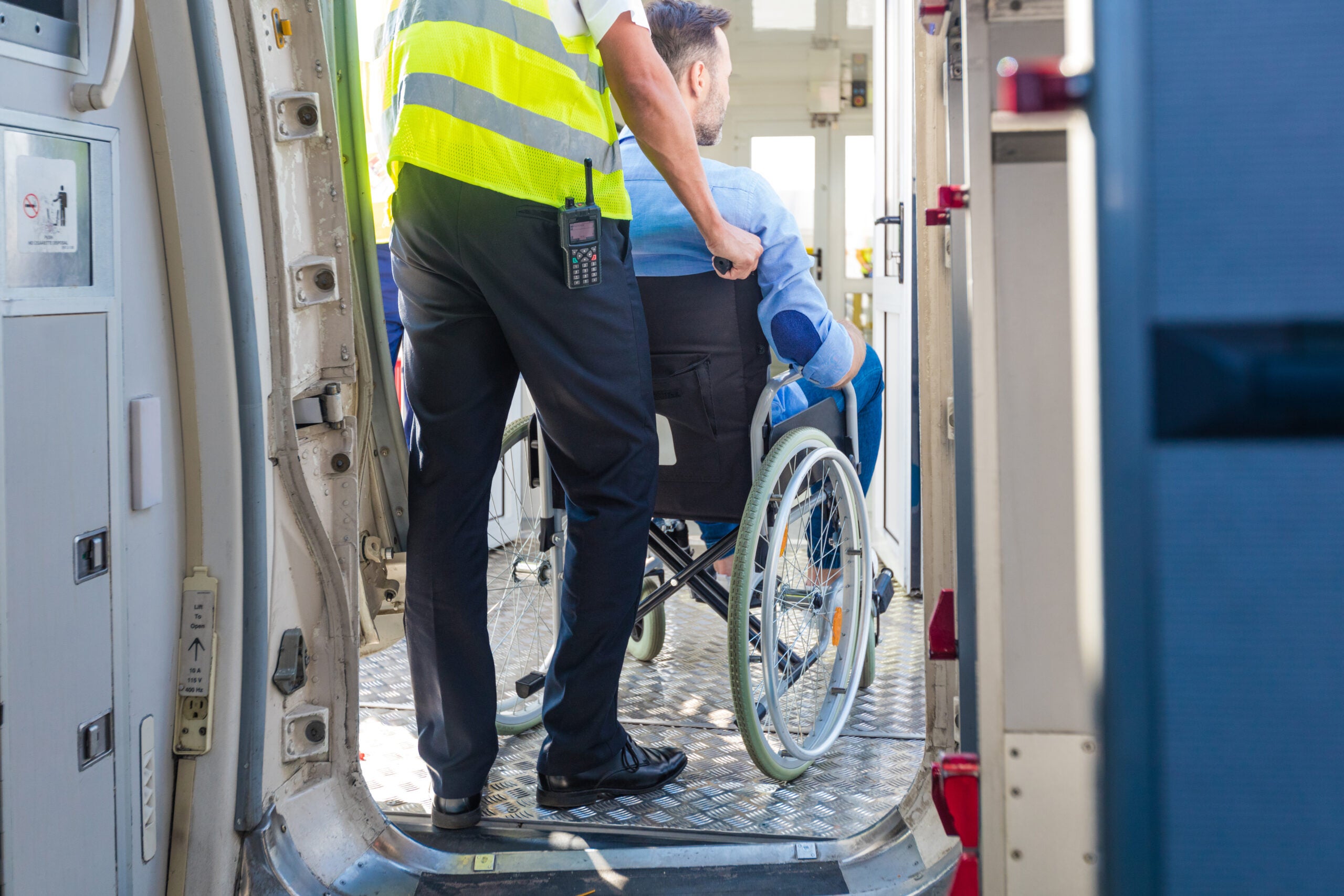United adds wheelchair accommodation filter to its flight search results
United Airlines began rolling out a new tool Thursday aimed at making travel easier for passengers who rely on wheelchairs for mobility.
The airline introduced a new filter on its search results page that allows passengers to enter their wheelchair’s specifications, and prioritize flights on aircraft that can accommodate that particular mobility device.
Want more airline-specific news? Sign up for TPG’s free biweekly Aviation newsletter.
The tool, which United first announced last fall, identifies flights based on the physical dimensions of the wheelchair and the type of power source it uses.
After searching for a flight on the airline’s website or mobile app, passengers can select the “Wheelchair” option and enter their details.
If a customer has to book a more expensive itinerary in order to be on an aircraft that can accommodate their wheelchair, United will refund the fare difference, the airline said.
Different aircraft have different-sized cargo doors and holds, which can present a challenge for passengers who need to travel with a wheelchair, particularly those with specialized or customized equipment.
Separately, the airline said it is testing a new program at its Houston hub at George Bush Intercontinental Airport (IAH) to trial new ways to help passengers if their wheelchair is damaged or lost in transit.
The airline did not share many details of the program in its announcement but said that it would focus on the time between when a customer’s flight arrives and when they’re either reunited with a lost wheelchair or provided an “appropriate” loaner to use while their wheelchair is located or fixed.

Daily Newsletter
Reward your inbox with the TPG Daily newsletter
Join over 700,000 readers for breaking news, in-depth guides and exclusive deals from TPG’s experts
“The more we know about a customer’s device, the more likely their experience will be a good one – from booking and check-in to the flight itself,” Linda Jojo, an executive vice president and the chief customer officer at United, said in a statement. “These new tools and policies also set our employees up for success, especially those working on the ramp or at the gate.”
While the new tool should prove helpful, it does have limits for some passengers, including those traveling to or from smaller airports that are only serviced by regional aircraft, meaning there’s no larger plane that they can try to fly on. The tool only includes flights operated by United itself, rather than all Star Alliance partner flights. And passengers whose wheelchairs are lost or damaged at airports other than IAH will not benefit from the pilot until — or unless — it’s expanded.
Even so, the announcement marks a relatively major step by an airline to improve how it approaches accessibility, an ongoing challenge for both airlines and affected passengers.
Improving accessibility: United will add Braille signage throughout its aircraft, an accessibility first
The difficulties faced by wheelchair users while traveling have come under increasing scrutiny since late 2021, following the death of a disability advocate.
Engracia Figueroa, 51, died several months after a United Airlines flight on which airline workers allegedly damaged her $30,000 custom wheelchair by mistake. While sitting in a loaner wheelchair at the airport — a broken manual wheelchair — she reportedly developed a pressure sore, which her family argued led to complications that ultimately resulted in her hospitalization and death.
United and its regional airlines carried 152,549 wheelchairs and mobility scooters in 2023, according to data from the Department of Transportation’s Bureau of Transportation Statistics. Of those, 1,761 were mishandled in some way, or 1.15%.
The BTS defines mishandled baggage and wheelchairs as any that are checked into the cargo hold and are “lost, damaged, delayed, and pilfered.”
In recent years, accessibility in the air has become a bigger conversation, whether the topic is the safe handling of passengers’ wheelchairs, lavatory sizes or the real-world practicality of evacuation safety standards.
In July, United began adding Braille signage to its aircraft cabins, making it easier for passengers who are blind or have significant vision impairment to identify their seats and various areas inside and outside of lavatories.
Last month, the Department of Transportation proposed new rules that would sharply penalize airlines for mishandling passengers’ wheelchairs while imposing new training and operating standards for carriers.
Related: DOT proposes sweeping rules for how airlines handle passengers’ wheelchairs
“The basic promise of transportation is the idea that everyone should be able to travel safely and freely to the places that they need to be,” Transportation Secretary Pete Buttigieg said during a conference call with the media in February ahead of announcing the new proposal. “If a person is not able to travel, simply because someone else decides that it’s too hard to accommodate them, the world shrinks.”
Related reading:

